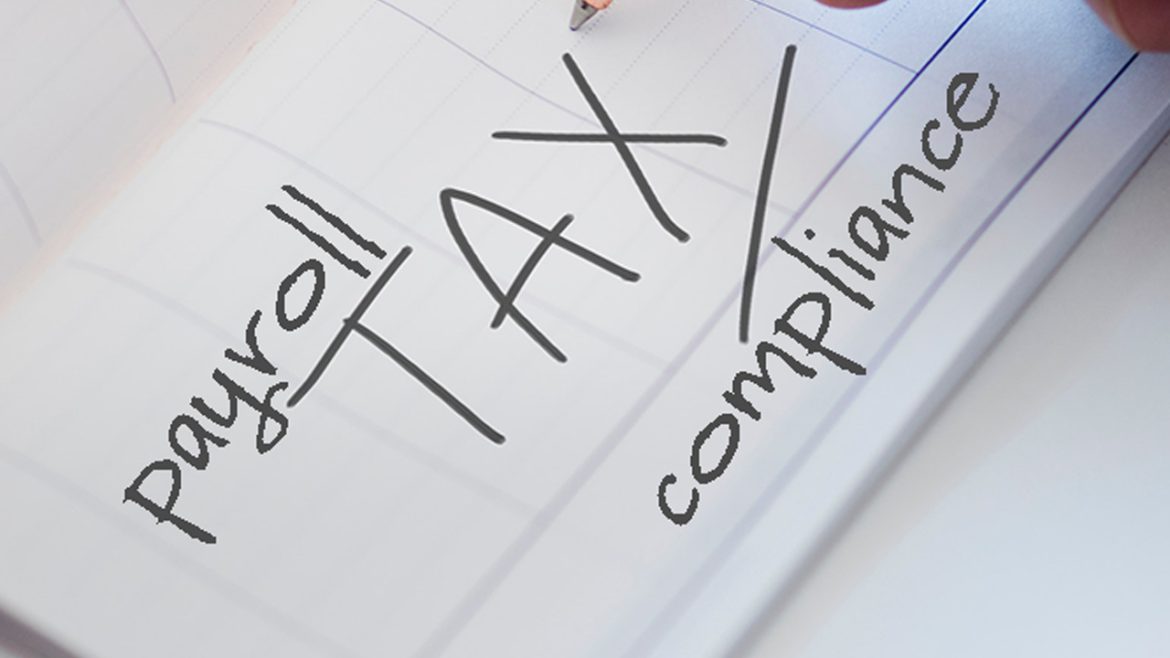1. Compliance
A outsource payroll service provider is continuously upgrading and improving their ability to provide the best service for you.
They upgrade their software and systems on a regular basis. This may be multiple times a month or even in a week if the law is in flux as it has been in 2020. The payroll provider company of course has to keep up with the changes in the laws of all 15,000 plus payroll-taxing entities as they happen. A payroll outsourcing company must be able to print out any updated form as needed, or they will have to do it by hand. This is a chore they do not want to undertake with many clients to complete them for.
The outsource payroll service provider provides ongoing training for their staff. As the laws and the systems change, training is provided to keep staff fully up to date. Payroll companies offer training on a weekly basis as well as seminars and webinars, professional publications, monthly chapter meetings, annual conventions, and more educational opportunities in the industry. Employees study for credentials such as FPC (Fundamental Payroll Certification) and CPP (Certified Payroll Professional), which are tested for and overseen by the American Payroll Association. Such certifications, like insurance licensing, require ongoing CPE. For payroll professionals, it is a minimum of 20 hours a year.
2. Avoid penalties
Occasionally everyone misses a deposit or filing deadline, forgets a form or otherwise makes a mistake that results in a penalty that the agency would have to spend a great deal of time trying to resolve and usually end up paying the penalty anyway. The IRS alone issues roughly six billion dollars a year in employment tax penalties. 40% of small businesses are levied with a penalty every year, which averages around $800 per business.
Outsource payroll service provider greatly minimize the chance that your agency will pay any penalties or interest due to missed deposits, late filings, bad calculations or other clerical and computational errors of your payroll taxes. If a payroll outsourcing company makes a mistake, they are responsible for the research and costs. If it is their error, they should pay it. They have much more practice in doing this kind of work and make very few mistakes; otherwise, they do not last very long in the business. A good outsourced payroll company should deposit your payroll taxes and file all your payroll tax reports – on time, every time. After all, they are not processing taxes for just one company; they are filing for hundreds or thousands of companies.
In addition, if you have made an error that causes a penalty many times, the outsource payroll service provider can get the penalty abated. They are experts at this. Many, including us, have CPAs on staff that can work with the IRS to reduce or abate penalties. We are not always successful, but our track record is pretty good. In addition, we have a United States Tax Court Practitioner on staff that can take a client’s penalty, if appropriate, to US Tax Court. His record in winning cases in the Tax Court is superb.
3. Protection from check fraud artists who could/would raid your bank account.
When you use a outsource payroll service provider to process your payroll, you can reduce the number of checks that you write substantially. This not only lowers your accounting costs by reducing the size and complexity of your bank reconciliation; it can also reduce your banking fees.
It also reduces the opportunity for checks to fall into the hands of check fraud specialists. Check fraud is one of the largest dollar value crime in the country year after year. The Nilson Report indicates that check fraud exceeds 20 billion dollars a year, and the American Bankers Association recently stated that check fraud losses are growing by 25% per year. Payroll processing companies hire specialists to consult about reducing fraud.
A good outsourced payroll service provider should be able to discuss numerous devices that they use to protect themselves and their clients from fraud. One of the leading consultants in the payroll industry concerning check fraud is Frank Abagnale. You saw Leonardo DiCaprio play him in the 2002 movie “Catch Me if You Can.”
4. Take advantage of Tax Credits that you may not even know exist.
An outsourced payroll company should have the ability to check to see if your company or location makes tax credits available for hiring some or all new employees. This varies widely from State to State and location to location. It is tough to keep up on all of the available credits unless you are in the business.
One of the newer Tax Credits is 45S. This provides a tax credit of up to 25% of the wages you pay for most non-vacation time off you give your employees. If you give them sick days, time off to care for a child, a “Mental Health Day”, or various other reasons, there is a Federal tax credit waiting. A good outsourced payroll service provider can show you how to set up your policy manual and system to make this credit, and possibly others, available to reduce your Federal Taxes.
5. Upgrade privacy for you and your employees.
When you outsource payroll, you actually increase your security and privacy. All the reports are computerized and encrypted. No reports left around for people to see. No boxes of old reports. Your outsource payroll service provider should have the ability to restore all your old files to a new computer for you if the existing one is compromised in any way. With direct deposit and employee self-service, there are no paychecks or paystubs to be left in the wrong place for the wrong person to see. As the boss, you can control who sees what if anything,
Employee self-service takes care of check stubs and check stub history when needed; Self-service also takes care of W2 distribution. It also has old W2s when needed. The employee has a password-protected site that they alone can access to get information. It can do a number of other things like new W4s and more if that is your desire.
6. Take a vacation.
With an outsourced payroll service provider that is cloud-based, you can input the payroll from any internet-connected computer in the world. We have a client who submits payroll via the Starbucks Wi-Fi at the beach in Hawaii twice a year (pre-COVID). You can have someone else submit the payroll and then you can check it from anywhere. You have the option to submit early or just have the payroll company replicate the previous payroll. It is like having a payroll staff without having to pay for it.
7. Call on payroll tax experts at no charge.
Your outsource payroll service provider should have CPAs on staff to answer your technical questions. Not all outsource payroll service providers have them available for clients to talk to, but some do. Make sure you ask in advance. Payroll specialists, FPCs, and CPPs are great, but, sometimes you need that CPA! If you have to talk only to a call center or a clerk, then you are not getting the service you are paying for. They should have employment tax experts on staff to advise you and to be able to advocate for you to the IRS and the States. This includes such things as knowing you may have to report 1099 workers as New Hires for child support garnishments.
You would not go to court without an attorney why would you every talk to the IRS without a CPA or even better having a CPA do it for you. Our firm has every client execute an IRS “Form 2848 IRS Limited Power of Attorney”. This form which authorizes a CPA, an attorney or an Enrolled Agent subject to IRS Circular 230 requirements to represent your agency and advocate for you with the IRS. There are similar forms for the various States. With this form in place we can deal with the taxing authority directly for you. We know the law, regulations and procedures that are required to follow and can make them toe the line. In many cases we may have the experience to be more knowledgeable than the IRS employee we are talking with on your behalf.
In this time of Covid it may be of particular importance to have an expert in your corner. The law has changed in the following ways already and more is coming.
• PPP loan and of course the documentation to prevent having to repay it.
• Paid sick leave and Expanded family and medical leave under the Emergency Family and Medical Leave Expansion Act.
• Families First Corona Response Act deferral of employer share of employment taxes.
8. Save time.
No checks to print. No tedious filings; monthly, quarterly annually. Never miss a deposit again. No answering IRS and State letters concerning employment taxes. You don’t have to keep up with tax or software updates. You don’t need to keep up with changes in tax or employment law. You don’t have to become a payroll professional. Your payroll outsource payroll service provider should have them on staff. Your payroll service provider will keep up on the changes and advise you if there is something you need to do. It will advise you when the I9 changes, and you need to throw out the old. No calculating net pay and taxes. No filling out tax forms. No remembering to make tax deposits timely.
An outsourced payroll provider will save you time to focus on growing your business.
9. Save money.
Your outsource payroll service provider has current software always available at no additional cost. There are no costly tax updates to pay for, sometimes multiple times in a year. There will be no penalties for small oversights. You or your staff will need less time and training to keep up with changes to payroll and tax laws. Your outsource payroll service provider offers you economies of scale on everything from paper, checks, envelopes, to banking and direct deposit fees. All of this saves you time saves you money. Everything that lessens your exposure to fraud saves you money. Everything that increases privacy without you having to do anything can save you money.
10. Peace of Mind.
If you have read this far. One bonus reason to use a outsource payroll service provider. Peace of mind. No worries about payroll. No sleepless nights of the IRS bogeyman watching over your shoulder. You can concentrate on running and growing your business and have one less thing to worry about.







